EVERY MAN A TIGER
BY RICKEY ROBERTSON
The Vietnam War was one of America's most deadly and costliest wars in our history. Thousands and thousands of both volunteers and draftees entered into all branches of military service during the Vietnam War. There had been war in Vietnam ever since the ending of World War II between the French and the Vietnamese. And after the French moved out in 1954 after their defeat, the country was partitioned off and divided into North and South Vietnam. The Communist North Vietnamese wanted the 2 separate country's to reunify and join together, with the North Vietnamese telling the world they would liberate South Vietnam from all the imperialist and foreign influence that they claimed was destroying South Vietnam. The North Vietnamese did not want South Vietnam to enjoy freedom and democracy but they wanted Communism to take over. Let's look at the recruits who began to fill out the United States Army and the training that they received. And where was the most well known training area ? Yes, Louisiana. And it was a place called Tiger Land at Fort Polk.
As America began to send large numbers of troops into Vietnam in 1965, infantry training centers began to train infantrymen for combat. As recruits arrived at Fort Polk, Louisiana they found a hot, humid, dusty, muddy, post where tough basic and advanced training was given. Fort Polk was an out of the way post still filled with World War II barracks and buildings in West Central Louisiana near Leesville, Louisiana that would grow into the Army's premier Vietnam training center. During the years of 1962 until infantry training ended in 1976 over 1.1 million troops would be trained to fight in the jungles of Southeast Asia.
To give these new recruits further infantry training after 8 weeks of basic training, the new soldiers were sent to North Fort Polk for AIT (Advanced Infantry Training). At North Fort they entered a new area known as "Tiger Land". Tiger Land was the training area where these soldiers would receive their first "combat" training in the field. Tiger Land was a large area of thousands of acres of land where there were villages resembling Vietnam Villages and hamlets just as these soldiers would see when they arrived in Vietnam. These training areas were located in Natchitoches, Sabine, and Vernon Parishes. Of all the training sites, Tiger Ridge located on Peason Ridge was the most famous and the largest of the village complexes. This was a fortified village that trainees had to attack and occupy. At Tiger Ridge and the other village locations realistic hootches made of palmetto were located in the village complexes. Tiger Ridge was also completely surrounded by a large earthern berm dotted with bunkers and fighting positions, and was also guarded by a large water filled moat. Tiger Land was named after this village. And in all the village sites in the Tiger Land area there were tunnels from one hootch to another. Besides the North Fort and Peason Ridge areas, in the Kisatchie National Forest at Kisatchie was a location filled with villages, bunkers, trails, and booby-traps known as the Horse's Head Area. The final weeks of field training were conducted in the National Forest in locations known as the Big Rock Hill , Simmons Creek, and the Sand Hill. Troops bivouacked throughout this area, set up ambushes, were ambushed, and conducted patrols into the village locations and were able to say they had been training in the "boonies". And as these units returned from the field to Fort Polk and the new soldiers graduated, it was always said that 98 out of every 100 man company was assigned to Vietnam.
Today the Horse's Head area at Kisatchie is one of the most beautiful areas in the National Forest. Looking at the area on a map it looks exactly like the head of a horse. People hunt, camp, and conduct outdoor activities all through the old training areas where thousands upon thousands of soldiers trained over 50 years ago. But there are still remnants of the massive training that took place there. At the Big Rock Hill are the names of soldiers and even campers carved into the sand rocks who came through that area and in other areas where big sand rocks are located. And yes, you can still find the old village sites and can find the old bunker locations along with foxholes and yes, even the old spider holes used by the troops who portrayed the Vietcong. And you will find old machine gun and rifle cartridge cases scattered throughout the area where training battles were conducted. It is a land filled with history and the memory of the men who trained here for battle in a land ten thousand miles from home. I often look at the names scratched into the rocks and wonder "did he make it through the war". I recently found a "dog tag silencer" lost many years ago and thought of this soldier of long ago and wondered did he survive.
These were America's sons who trained in Tiger Land for combat in Vietnam. Due to this hard and very realistic training issued to trainees, the motto for Tiger Land was "Every Man A Tiger". Every trainee was trained to fight like a tiger as they went into battle when they deployed into the battle zone of Vietnam. These volunteers and draftees conducted themselves with courage and honor on the field of battle. In 1976 the Infantry Training Center closed at Fort Polk as the 5th Infantry Division arrived to garrison the post. And in 1992 another change brought the Joint Readiness Training Center to Fort Polk and again realistic training was established for various military units. And yes, reminiscence of the days of Tiger Land, the JRTC has realistic training in villages built to resemble Afghan and Iraqi settlements where our troops are battling today . And Tiger Land is not forgotten also. At Fort Polk each year there is a "Return to Tiger Land" for the veterans filled with displays and at Kisatchie on the actual training grounds there is a "Tactical at Tiger Land" where the training is re-enacted and veterans and others re-live the experiences they underwent so many years ago. Tiger Land will long live in the hearts and minds of those who trained at this location. And we say "thanks" to all the Vietnam Veterans who never were welcomed home. And Natchitoches, Sabine, and Vernon Parishes are filled with these veterans. Give them a handshake and say thank you for your service. And yes, Every Man Was A Tiger!
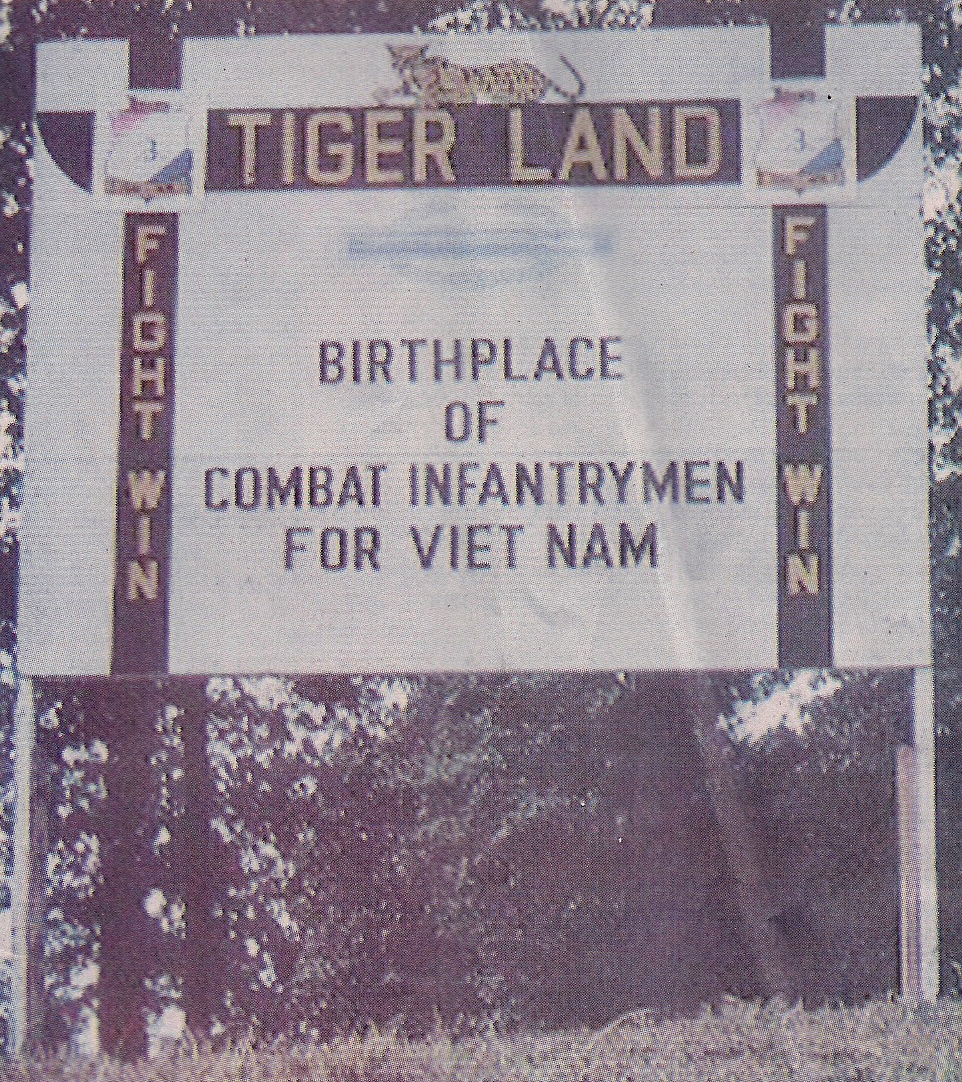
Sign at the entrance to Tiger Land at Fort Polk during the Vietnam War. Combat infantry training was given to all the soldiers who went through Tiger Land. (Robertson Collection)
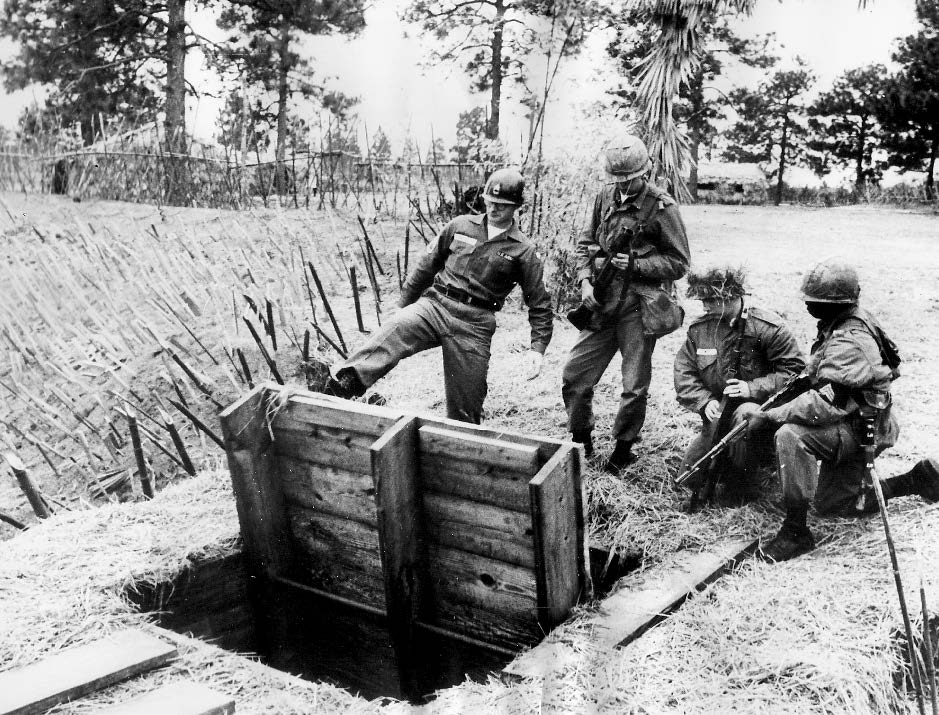
Large booby trap at the entrance to Tiger Village located on Peason Ridge. Trainees had to be constantly watching and searching for booby traps. (Robertson Collection)
.jpg)
Tiger Village located on Peason Ridge was a large fortified villages that trainees had to attack and capture during their training at Fort Polk. (Robertson Collection)
.jpg)
.jpg)
Simulated Vietnam Village that trainees went through during training at Tiger Land. (Robertson Collection)
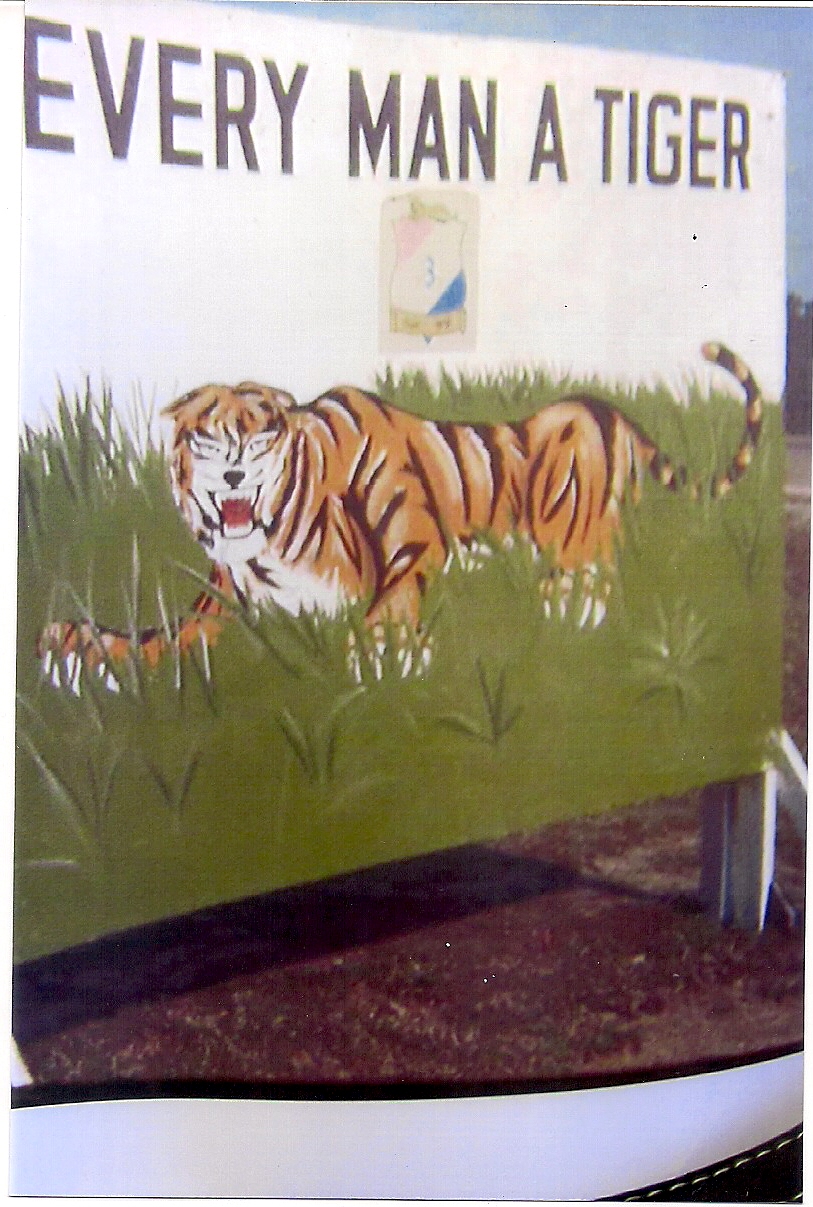
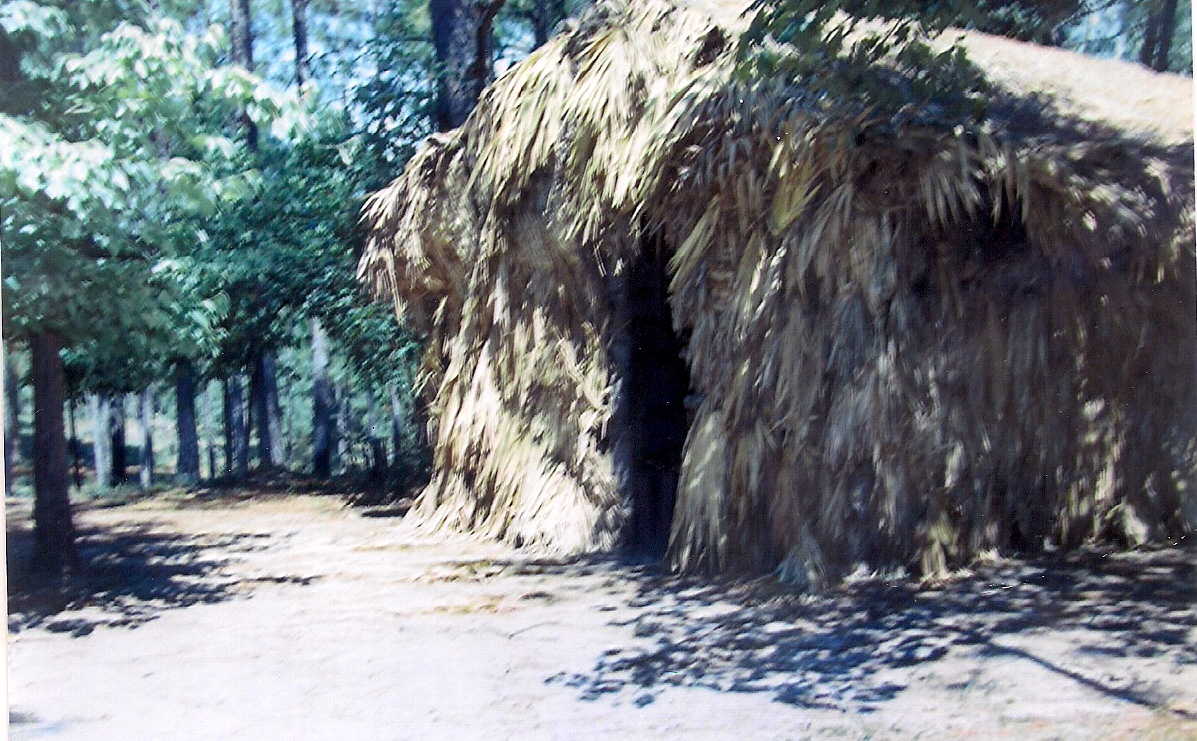
Picture of one of the hootches in one of the Vietnam War training villages. Palmetto was brought from South Louisiana and was put on the huts to provide realism. (Robertson Collection)
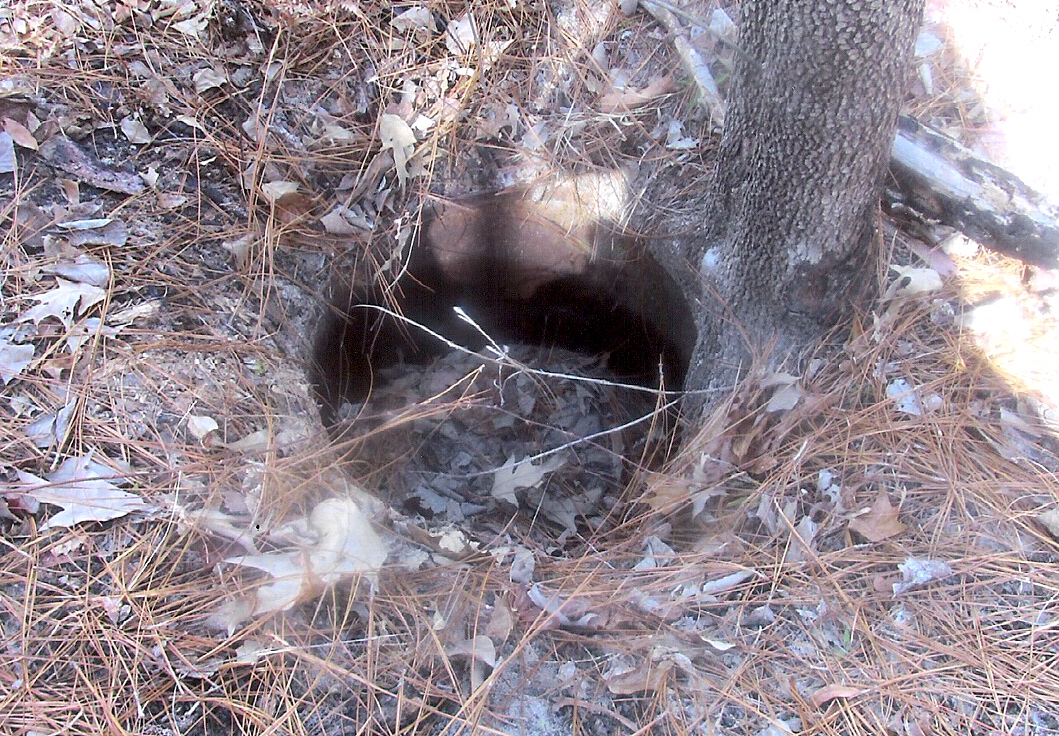
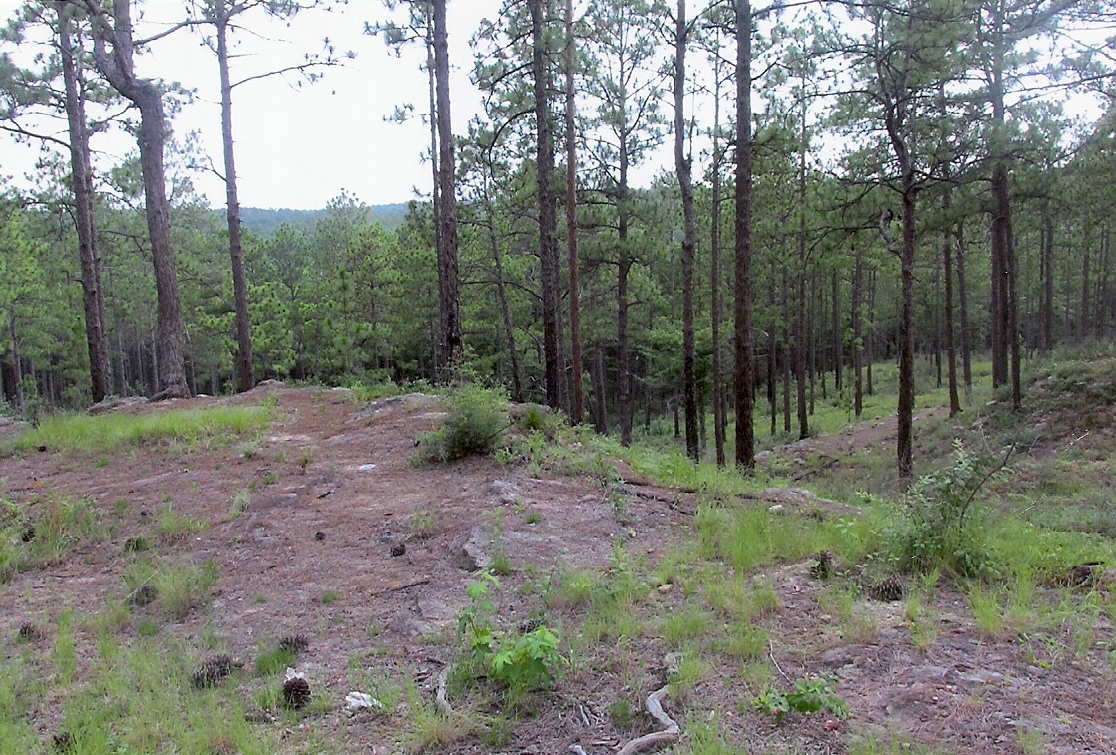
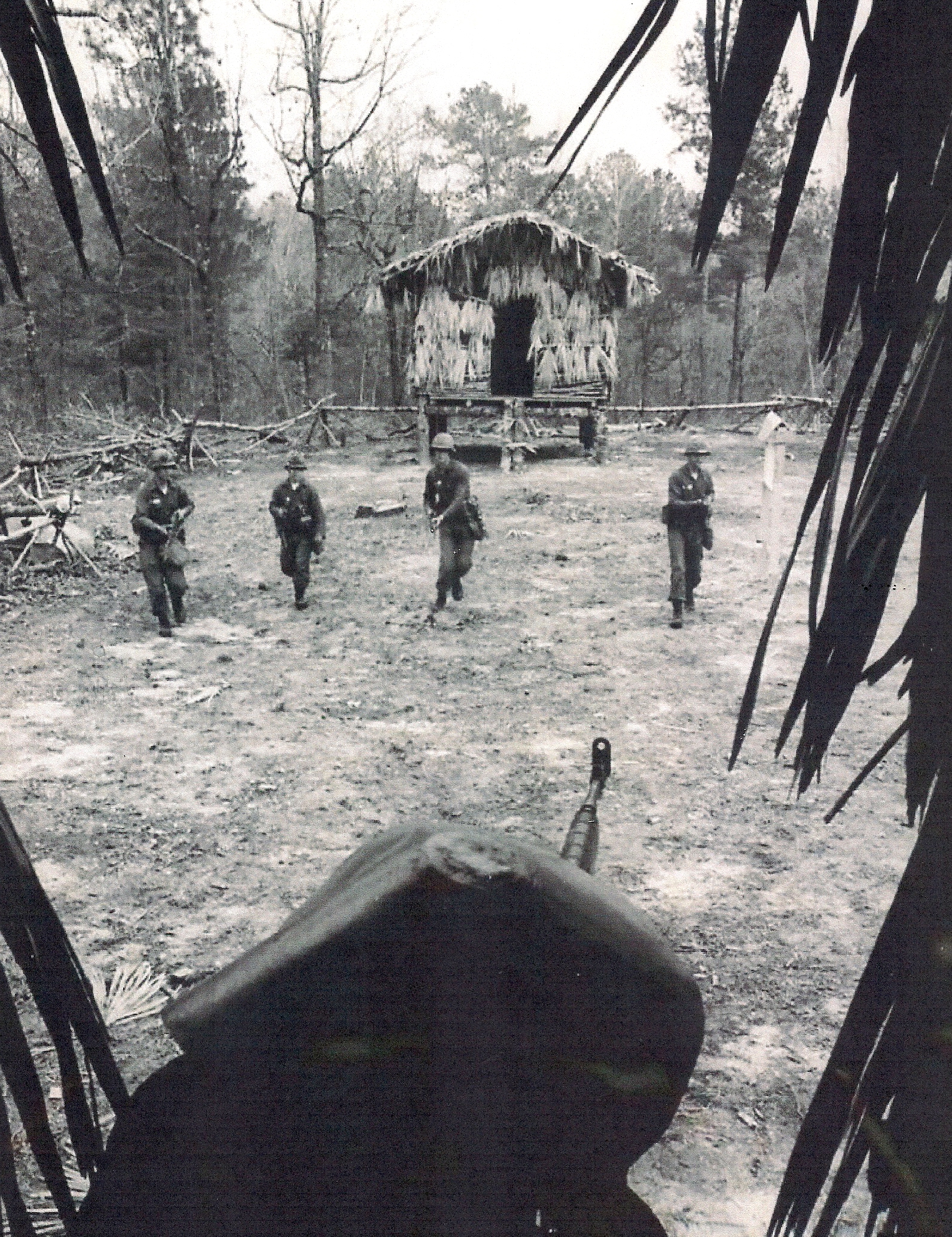
Trainees advancing into a village at Kisatchie searching for the Viet Cong. However the Viet Cong are waiting for them to advance. (Robertson Collection)
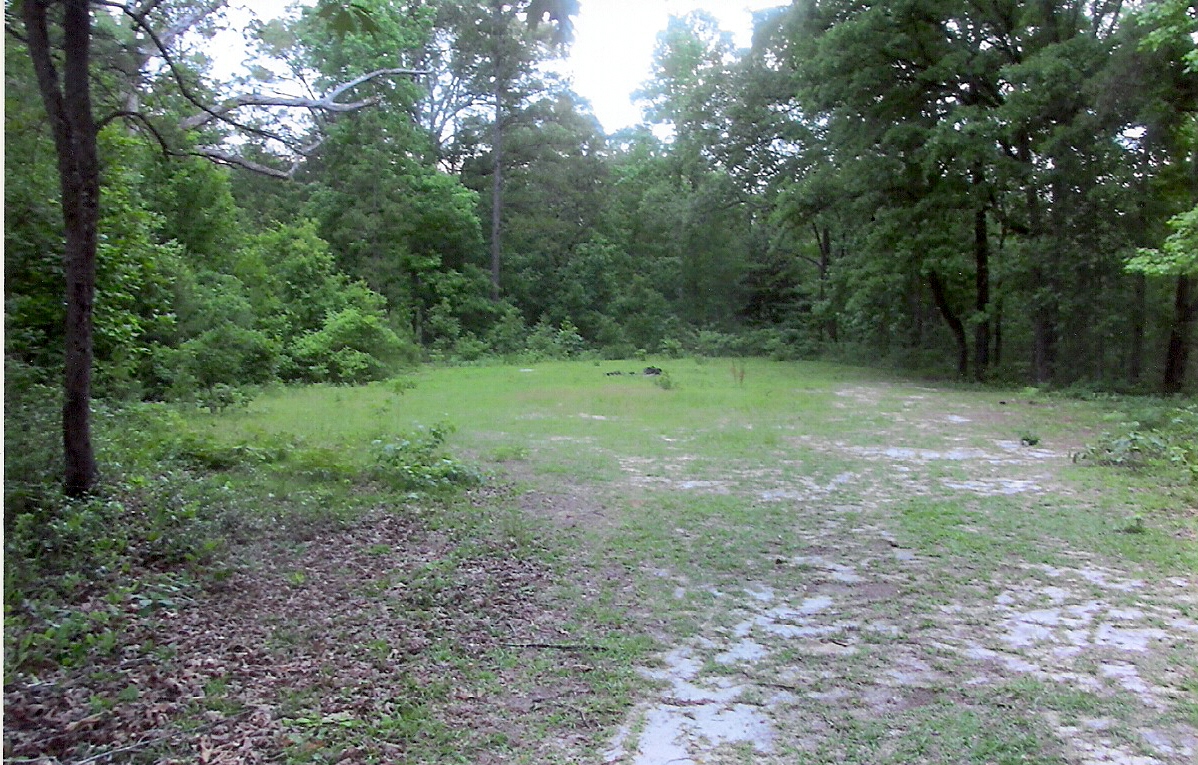
A photo taken of the exact location of the advancing trainees in the Vietnam Village at Kisatchie in July 2017. Old cartridge cases from rifles and machine guns are still found throughout the area. The forest has not reclaimed this site and it is easily recognized as a village site. (Robertson Collection)